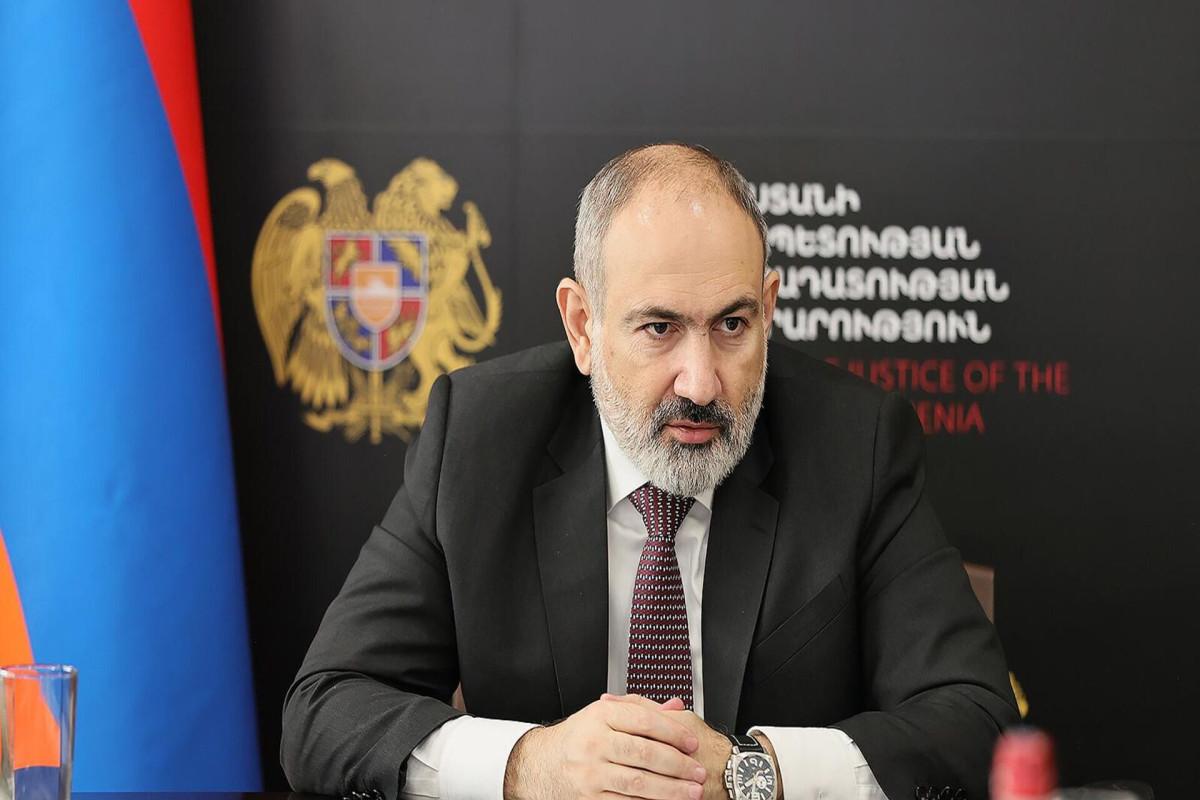Primitive lies behind Armenia's aversion to peace Pashinyan’s constitutional facade
Armenian Prime Minister Nikol Pashinyan recently addressed the nation on the 34th anniversary of Armenia's Declaration of Independence. While the speech itself was expected, the question of whether Armenia can genuinely be considered independent is more contentious. After all, its borders with Iran and Türkiye are guarded by Russian border troops, a Russian military base operates in Gyumri, and American military aircraft loaded with weapons and personnel land at Zvartnots Airport before being deployed in Zangezur.
Armenia clearly had the opportunity to choose a different path—a path that could have led to prosperity and strong relations with its neighbours. This alternative would have offered Armenia substantial economic benefits, including the strategic advantage of being a key transit hub for major regional transport and energy routes.

Armenia could have actively developed economic cooperation with Türkiye and Azerbaijan, reaping significant benefits. But things took a different turn. Armenia chose a path of territorial claims against Türkiye and Azerbaijan, which ultimately led to the First Karabakh War. The foundation for this conflict was laid by the pan-Armenian movement known as "Miatsum," or "reunification."
It wasn't just a slogan promoted by a few "urban eccentrics." No, it became a national idea for Armenians, similar to their claims on Mount Ağrı, which is located in Türkiye and is referred to by Armenians as "Ararat." Crucially, these territorial claims against Türkiye and Azerbaijan were also formalized legally.
"On August 23, 1990, the Supreme Council of Soviet Armenia adopted the Declaration of Independence. With this document, the people of Armenia announced to the world their desire to have an independent state, and recorded their will," said Nikol Pashinyan today. He added that "later, in 1995, the reference to the Declaration of Independence found a place and is still present in the preamble of the Constitution of the Republic of Armenia."
Indeed, the Declaration of Independence of Armenia, adopted in the summer of 1990, shortly before the formal dissolution of the USSR, includes a reference to the resolution "On the Reunification of the Armenian SSR and Nagorno-Karabakh." Given that the preamble of Armenia's Constitution references this declaration, which asserts the goal of "reunification with Karabakh," Armenia has, in effect, formalized its territorial claims on Azerbaijani lands.
Moreover, the Armenian state, established in 1991, emphasized its continuity with the First Republic of Armenia by adopting its coat of arms and anthem, which, among other things, depict Mount Ağrı.
What else could this be but claims to the territories of Türkiye and Azerbaijan? This is precisely why official Baku insists on the need for changes to the Armenian Constitution—to eliminate any legal grounds for new conflicts in the region. We can all see how persistent Armenian "revanchism" is and how strong the forces remain that still plan to advance their political agendas based on territorial claims against Türkiye and Azerbaijan.
Baku's demands are clearly justified and do not constitute interference in Armenia's internal affairs. Instead, they reflect Azerbaijan's commitment to achieving lasting peace in the region. But what did we hear from Pashinyan? Just another round of verbal manipulation.

"But, contrary to various interpretations, this does not mean that the entire content of the Declaration of Independence is included in the Constitution of Armenia and that the content of these two documents are identical," Pashinyan asserted. He is trying to argue that the Armenian Constitution only reflects those provisions of the Declaration of Independence that are expressed directly, literally, and verbatim, and that any other interpretation is simply inappropriate.
Firstly, this is untrue. One cannot be "partially pregnant," including in matters of constitutional interpretation. Secondly, if Pashinyan's claim were accurate, it would make it easier for him to remove the main obstacle to signing a peace treaty between Armenia and Azerbaijan.
Yes, if the Armenian Constitution and the Declaration of Independence operate independently of each other, it only strengthens Baku's argument for removing any legal grounds that could support future territorial claims by Armenian "revanchists" against our country.
In reality, however, the current Armenian leadership appears unwilling to address this critical issue. This suggests that Pashinyan and his team are not committed to achieving lasting peace. Instead, they seem intent on leaving a loophole for future conflicts, relying on political, financial, and military support from Western countries as a crucial component in preparing for such conflicts.








